To what extent are the migrant workers related to creative industry in the era of Post-Fordism: taking Ningbo for an example
Posted: May 31st, 2009 | Author: Fu Hanqing | Filed under: Uncategorized | No Comments »Introduction
Within the recent twenty years, developed capitalist countries are in the process of promoting economic structure. As a part of global economy, China is also affected by this change. Now, in China, the most important thing is to change from ‘Made in China’ to ‘Created in China’. Directed by this objective, creative industry has developed to a certain extent. However, as a basic constituent part, migrant workers’ roles in creative industry always ignored. Few people connect migrant workers with creative industry. Actually, as the typical subject of Post-Fordism, highly flexible and unstable of migrant workers fit to the features of creative industry, which is also the typical industry in the era of Post-Fordism, to a certain degree. However, question of what is the relationship between creative industry and migrant workers is arising. In order to discuss the question, this paper regards Ningbo, a second-tier city in Zhejiang province, as an example to analyze the relationship between creative industry and migrant workers in the era of Post-Fordism. The concept of Post-Fordism and its representation in contemporary China will be first presented. The relationship between creative industry and migrant workers will be then examined from three perspectives, with focuses on the creative production and consumption, the spatial distribution and the creative expression.
1. Post-Fordism and Its Representation in Contemporary China
Post-Fordism is a concept corresponding to the Fordism. Based on producing commercial article in a large scale on the production line, Fordism is a mode of production which regards standardized products and low prices as important means in business competition (Braverman 1974). Since 1950s, Fordism has been practiced by western companies generally. As a result, the golden age of capitalist economy occured. However, by the end of 1960s, the environment of world economy had changed, and the inherent disadvantages of Fordism emerged. In order to reply the crisis, developed capitalist countries began to promote economic structure (Alain 1987). In this process, two modes, Neo-Fordism and Post-Fordism, for resolving the crisis shaped regularly (Albritton et al. 2002). In the eye of the development of capitalist countries from 1990s, Post-Fordism represented the developmental direction of the mode of production. Comparing with Fordism, Post-Fordism is a mode of production based on information and communication techniques and to satisfy the individuating demands. And both the process of production and labor relations of Post-Fordism are flexible. Specifically, Post-Fordism includes flexible specialization and lean production. Flexible specialization means small quantity production done by skilled workers takes the place of quantity production on the production line. When consumer’s demand is changing, temporary groups for producing special products may be superseded by other associations. Lean production means companies set up close ties among research, production and sale departments. The innovation in both technology and product is important. In addition, companies should enhance core competitive in main areas and outsource the weak parts of production to other companies, Amin notes (1994).
Although Post-Fordism is used to describe the mode of production in western society, China is affected by it inevitably in the wave in economic globalization. Actually, the representation of Post-Fordism in China is obvious and even special. Now, in China, the transition of traditional industries is in progress. In order to move to a better position in industry chain, originality which can enhance the product added value is paid more attention. In other words, creative industry has become more and more important in the industrial structures in China. Actually, creative industry is a typical industry of Post-Fordism. Firstly, aiming at the various requirements, different creative products emerge in the market. The typical example is fake design. In fact, the invaluable asset of fake design is to satisfy the individuation demands of customers. It will be further discussed in following part. In addition, the various demands necessitated the small quantity and special production. Fake design can also be a good example. Moreover, because of the unstable market requirements, creative companies have to employ workers in a flexible way. Low-skilled workers were gathered and rejected casually. And because of a lack of creative power, Low-skilled workers are classified into low-level labor force, earning little money. (Fusheng & Lei 2005). In China, migrant workers are the main parts of these low-skilled workers. They usually get low-level job like serving for resort, recycling wastes and constructing infrastructures facilities of creative industry. And the employment is also temporary, after finishing the work migrant workers should find new jobs. It should be noted that the feature of no fixed abode helps migrant workers adapt doing odd jobs.
2. The Relationship Between Creative Industry and Migrant Workers in the Levels of Creative Production and Consumption
2.1 Creative Production
In general, migrant workers are considered as in the periphery of creative industry. Neilson (2008) points out that in China, the development of creative industry should be supported by the infrastructure construction. And with the development of creative industry, more businessmen have desire to exploit real-estate in the edge of the city. So, a flood of cheap labor is needed. Ned & Neilson (2008) also indicate large influxes of migrant works solve the problem of the lack of labor force. Of course, migrant workers who have few work skills usually do work in the lower echelon of the creative industry. Their labor is highly flexible. Within some dates, migrant workers may gather together to work in the building site. After building the house, they have to find another jobs, it may or may not building houses.
The example of migrant workers in Ningbo can be a good instance. Shiyong (2007) reports Ningbo is the big producer in manufacturing industry in China. In the era of Post-Fordism, innovation in traditional industries is in the process of transforming in Ningbo. In this process, local labor force is far from the requirement of development, more migrant workers are needed, as. Low-skilled migrant workers always do the low-level jobs in Ningbo, such recycling waste products and building houses (Shuli & Jialiang & Suoping 2008). By researching, the recycling industry is prospering in Ningbo. There are various recycle stations and markets, such as Nanmeng second-hand goods markets, Housun metal scrap recycling market, and Wangchun renewable resource recycling station. A large number of migrant workers work in the recycling industry. This situation is quite similar to migrant workers in other industries. Although migrant workers’ work is not directly related to creative production, they guarantee the operation and development of creative industry.
A Migrang worker carries bricks on his back. Behind him, there is a tall building. ( Yinzhou area in Ningbo)
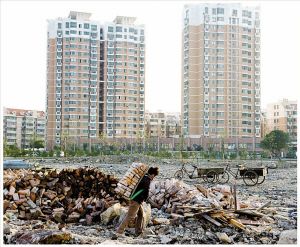
2.2 Creative Consumption
Migrant workers are usually in the low-end of value distribution of creative industry. People think that they do not have the ability to consume the creative products which contain more potential values. The whole imagination about migrant workers’ cultural consumption is connected to the tasteless performance of sings and dances or recreation in the low-grade KTV. Maybe these can be parts of portrayal of migrant workers’ cultural consumption. However, the innovative ability, in both production and consumption, of migrant workers cannot be ignored. Xiaoming & Jun (2008) points out that actually, in the process of transforming from ‘Made in China’ to ‘Created in China’, a very special mode of creation which is called ‘Fake Design’ has appeared. Fake design began in the manufacturing of mobile phone in 2008 and developed in manufacturing of digital products. After that, fake design is popular in various industries. The interesting thing is that the fake design products naturally have the characters of Post-Fordism. The producers of fake design products have broken the mode of quantity production, designing specific products to cater for different needs of customers. The fake design products enabled underclass, especially migrant workers, to afford the creative products. Thus, migrant works are included in both creative production and consumption.
To take Ningbo for an example, fake design products are also quite popular in migrant workers. During the research, migrant workers’ mobile phones which can easily be recognized as the imitation of Nokia, Samsung and other famous brands attract my interests. Liu (2009) told me that he spent 490 RMB on the phone in which the term of Sunsung was printed. Fake design phones make migrant workers look like townsman in some ways. Obviously, without fake design products, they may not use phones because of the high prices.
Migrant Workers & Fake Design Mobile Phone
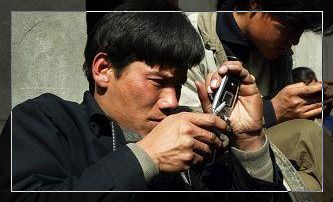
3. The Relationship Between Creative Industry and Migrant Workers in the Levels of Spatial Distribution
The relationship between creative industry and migrant workers in the levels of spatial distribution should be considered from two aspects. The first perspective is about the relation of the geographic distribution between migrant workers and creative industry. Butt (2008) indicates that, on one hand, as the main mode of production of Post-Fordism, cluster production is very common in creative industry. By gathering spontaneously or planning governmentally or developing commercially, creative cluster always distributes in the special spaces in the city. Neilson, & Rossiter (2008) point out that the operation of cluster production needs more supporting infrastructure which can bring more opportunities of low-skilled work. So, a large number of migrant workers are desperate for work crowd in creative cluster. In China, creative clusters gather in both the center and the edge of a city, a large amount of migrant workers also can be founded there. On the other hand, the cost of living is a prime consideration for migrant workers, so they tend to dwell around the creative cluster rather than live far from them. And the liquidity of migrant workers provides possibility for them to move willfully. A common example is that, in China, around the construction site, there are numbers of miserable work sheds in which migrant workers dwell. After building the house, these miserable work sheds are dismantled, migrant workers should move again until to find another temporary job. This process occurs through a cycle.
The second perspective is about the relation of the social space distribution between migrant workers and creative industry. In the era of Post-Fordism, creative industry has replaced traditional manufacturing industry, becoming the principal sector of the economy to some degree in the city (Susan & Gordon & Harloe M 1992). The transformation of industrial structure leads to polarization of the society. People who are in the high-end of value distribution of creative industry chain have become the new elites, such as the designers and the developers of real-estate. People who are in the low-end of value distribution of creative industry are in the lower class of the society, like the migrant workers (Zhigang & Fulong & Hanlong 2004). The polarization of social class also reflects the geographic distribution of different classes in the city. Elite always distribute in the luxury condominium of the civic center and the suburban villa while lower class, especially the migrant workers, usually live together in the urban and rural connecting areas. And they build shanty or lease unadorned houses own by local peasants, characterized by similar native places and occupations.
In Ningbo there are 3 kinds of conditions of the relationship between creative industry and migrant workers. First of all, creative cluster in Ningbo mainly gather in the industrial parks of the periphery of the city, such as ‘Creative Valley’ in Zhenhai area and ‘Innovation 128’ in Yinzhou area, and lofts of the old city town, such as Loft 8 in Haishu area and No.3 factory in Jiangdong area, as Che (2009) notes. The lofts were reconstructed from old factories, surrounded by communities. Migrant workers merely appear in these areas. However, both the ‘Creative Valley’ and ‘Innovation 128’ are located in the edge of the cities. Although, these two creative industry parks operate in the early stage, migrant workers have already assembled in these places. The construction of infrastructural facilities needs more migrant workers. Che (2009) also points out that both of two parks are projects of real-estate. Migrant workers can find more low-skilled work there, such as carrying of bricks and recycling metallic scrap. Secondly, affected by recycling industries, numbers of migrant workers gather in the city villages. City villagers distribute in every sections of Ningbo. A recycling market near the city village can be always found. For example, Zhang (2009) who lives in Housun village in Haishu area of Ningbo told us that he has lived in city village for one year and a half. In the beginning, he and his neighbor were introduced to work here by his villager of Anhui Province. Every day, they collect metal scarp in the metal scrap recycling market near Housun village and do some simple processing. By doing this work, they can earn more money than farming in his hometown. However, he has to move house and find new job, because Housun village are in the process of demolishing. Actually, more city villages, such as Lianfeng villiage and Wangchun village, are in the process of demolishing because of the urbanization of Ningbo. By then, migrant workers may gather in new places which can provide low-skilled jobs (Tiefeng 2009).
Temporary Shanty
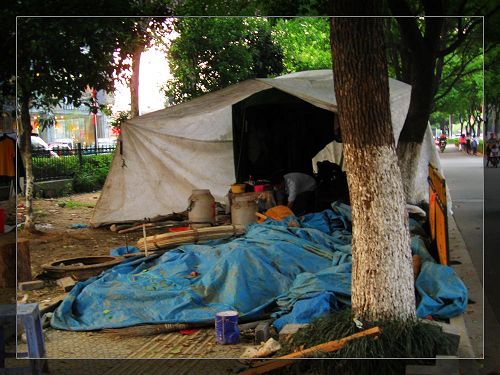
City Village : ‘Wang Chun’ Village

Thirdly, some migrant workers have relatively permanent home in Ningbo. This condition can be found in the creative industries which require some skills. The noticeable example is the textile and clothing industry. In fact, the transformation of textile and clothing industry in Ningbo has happened. Technical innovation was paid more attention to. Thus the requirement of work skills is relatively high. Some migrant workers have the abilities to work in textile mills and garment factories. And their problems of lodging are solved by enterprise. For instance, Ningbo Youngor clothing company, the top enterprises of textile and clothing industry in China, provides dormitories and supporting facilities for both local and migrant workers. The lives of migrant workers who have some work skills are relatively stable and they are called white-collar in migrant workers (Tan 2009).
4. The Relationship Between Creative Industry and Migrant Workers in the Level of Creative Expression
In our established thoughts, migrant workers merely related to the construction of infrastructural facilities of creative industry, the relationship between migrant workers and creative industry in the level of creative expression are not concerned. However, by digging, the deep relationship can be revealed. Guo (2009) indicates that the development of culture needs supporting of a stable and secure environment, while creation can be stimulated in the circumstance of uncertainties and fluidity. Thus, in this respect, the living environment of migrant workers can stimulate some new idea and new practices, no matter whose ideas and practices they are. TO view from another perspective, Blackwell (2008) represents that, migrant workers from different provinces congregated in the urban periphery, creating collisions among diverse experiences, skills and talents. These collisions provided a huge potential for innovation. Actually, the creative expressions, made by both migrant workers themselves and other creative producers, have arisen.
4.1 Self-Expression of Migrant workers
Recent years, migrant workers express themselves through various forms in China. In megacities, autobiography wrote by migrant workers are quite popular. Besides, lots of migrant workers are interest in poetical creation. In the first national poetry competition of migrant workers in 2008, more than 3000 migrant workers took part in the competition and over 20,000 poetries were handed in. All of these works express the state of surviving of migrant workers (They are migrant workers, they are poets 2008).
It seems that it is more possible for migrant workers to be stimulated to give voice to themselves in megacities. However, actually, in the Second-tier Cities, migrant workers are also interested in expressing their life and the methods for expressing are even quite special. In Ningbo, by researching several dwelling places, a general phenomenon is that migrant workers like to use something related to their works to beautify their environment. In Lianfeng village of Haishu area where rubbish collectors assembled, posters peeled from magazines, bottles, and decorations are used to decorate rubbish collectors’ houses. In a house, a dollar bill was stuck to the glass. Weng (2009) told me that he didn’t know which countries the bill belonged to, it was a memento of his life of collecting waste. Of course, these creative expressions are quite simple and their influences are limited, they can be considered as a channel for reading and understanding by other people in the same class and even higher classes (Yue 2008).
Actually, creative expression of migrant workers in Ningbo goes far beyond the simple way, instead, some cultural and artistic groups where members are all migrant workers have been established. Most of the groups perform just for enjoyment, and a few of them perform in public. Two groups named ‘Zhen Hai Art Ensemble’ in Zhen Hai area and ‘Wei Feng gongs and drums team’ in Jiang Dong area had performed publicly for several times (Zui & Yangyu & Yifen 2007). In addition, original painting exhibition drew by migrant workers is on show. The topics of these performances and works always closely related to the life of migrant workers, such as their love life, the housing problems and their expectation of life. Now, their performance has attracted artists and businessmen. Artists want to cooperate with these groups while businessmen desire to push their performances to the market. All of these seem that a creative cooperation crossed the boundaries is about to come forth.
Cultural and Artistic Groups of Migrant Workers
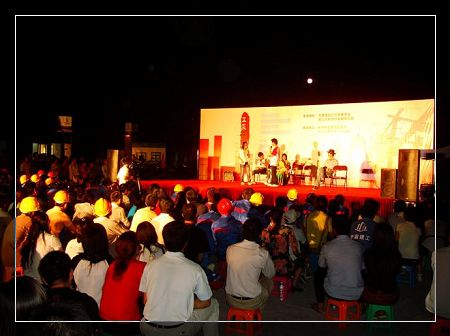
4.2 Concern by Others
In China, more and more producers in creative industry bring migrant workers under the vision of creative expression. Two methods are always used. Firstly, designers add some characters of migrant workers in design. For example, a canvas shoe named ‘Ospop’ is now popular in European and American Market. In fact, this kind of shoes was improved from shoes of migrant workers in daily life. Secondly, migrant workers are taken as the objects for creation. The influential works are photography shows named ‘Frailty and Potential——Flowing at the Edgy’ in Beijing Library in 2006 and the exhibition of work shed in which migrant workers live in Shanghai Biennale in 2008.
Ospop &Â Shoes of Migrant Workers in China

In Ningbo, products affected by the characters of migrant workers do not emerge at the present moment. However, there are exhibitions concerned about the migrant workers. For instance, a photography show of periphery of the city lay out in Ningbo People’s Art Center. When the camera zooms in the tired old dress, the anxious look and low-skilled work, like opening stands and pedaling tricycle, the subsistent state of migrant workers is demonstrated. This demonstration is powerful, helping paying more attention to these bottom people, as Shen (2009), the photographer of the pictures, says.
Although positive evaluations of creative producers’ expression of migrant workers are primary, there are still some negative evaluations. Shi (2009) pointed out that, for migrant workers, the real changes brought by these expressions are slight. Moreover, because of the positions of higher level which creative producers are usually in, these expressions emphasize on displaying creative forms than real contents. Migrant workers serve as a means for revealing innovation. Lei Zheng, the sponsor of a migrant workers literary society named ‘Beijing Work Songs Literary Society’, supports this opinion. And, he also noted that, in this stage, the main glances of creative producers from superior attitudes to migrant workers are sympathetic and curious. (Lei Zhen: ‘Work Songs’ are Needed in This Era 2006). Thus, it is important for migrant workers to express themselves in innovative approaches, and achieving understanding. It may be a contradiction. Creative producers can help migrant workers gain more attention, but they cannot display the real life and emotion of migrant workers. Migrant workers can faithfully representing themselves but the influence is limited.
Conclusion
In contemporary China, creative industry has developed to a certain degree. However migrant workers are considered not relate to the creative industry. Actually, as the typical subject of Post-Fordism, migrant workers play important roles in developing creative industry. This paper takes Ningbo as an example to discuss the relationship between creative industry and migrant workers.
The first section is about the concept and background. The notion of Post-Fordism is first explained. Post-Fordism is a mode of production which is on the basis of information and communication technique and to satisfy the individuating demands. And both the process of production and labor relations of Post-Fordism are flexible. Then the representation of Post-Fordism in China is discussed. It can be found the migrant workers’ characters fitting to the creative industry to a certain extent. The second section examines the relationship between creative industry and migrant workers from the perspective of creative production and consumption. On one hand, large influxes of migrant workers solve the problem of the lack of labor force in creative industry. On the other hand, the fake design products provide opportunities for migrant workers to consume creative inductive. Thus, migrant workers are included in both creative production and consumption. The third section discusses the relationship between creative industry and migrant workers from the perspective of the spatial distribution. The creative industry affects the distribution of migrant workers from both geographic and social levels. The forth section talks about the relation between creative industry and migrant workers from the perspective of the creative expression, other people and migrant workers themselves have different methods of expression. Thus, in the paper, the relationship between creative industry and migrant workers are discussed from these three levels.
It should be noted that, from the subjective aspect, because of the time limitation more researches of literatures and field works of the relationship between migrant workers and creative industry are not done. From the objective aspect, multiple roles and effects of migrant workers in creative industry have not been admitted and the academic studies of them are also limited. Thus the discussion of relationship between migrant workers and creative industry in this paper is not very deep and comprehensive. They could be further researched in the future and of interest to the scholars or other people who are related to creative industry or migrant workers.
References:
‘They are migrant workers, they are poets’ 2008, West China, December 4, p. 15. Retrieved May 14, 2009, from http://wccdaily.scol.com.cn/epaper/hxdsb/html/2008-12/04/content_21093.htm
Alain, L 1987, Mirages and Miracles: The Crises of Global Fordism, Verso, London.
Albritton, R, Itoh, M, Westra, R & Zuege, A 2002, Phases of Capitalist Development: Booms, Crises, and Globalizations, Palgrave Macmillan, London.
Amin, A (ed.) 1994, Post-Fordism: A reader, Blackwell, Cambridge
Blackwell, A 2008, Inverting the Cultural Map: Peripheral Geographies of Beijing’s Creative Production, Urban China vol. 33, pp. 48-51.
Braverman, H 1974, Labor and Monopoly Capital: The Degradation of Work in the Twentieth Century, Monthly Review Press, New York.
Butt, D 2008, Can You Manufacture a Creative Cluster?, Urban China, vol. 33, pp. 44-47.
Che, Xiao Fang (2009). Â Interview, 20 May.
Fusheng, X & Lei, H 2005, Fordism, Neo-Fordism and Post-Fordism: On Evolution of Production Mode in Developed Capitalist Countries, Teacing and Research, vol. 8, pp. 36-42.
Guo, Jing (2009). Interview, 13 May.
Lei Zhen: ‘Work Songs’ are Needed in This Era 2006. Retrieved May 20, 2009, from http://gb.chinareviewnews.com/crn-webapp/doc/docDetailCreate.jsp?coluid=0&kindid=0&docid=100216247
Liu, Chao (2009). Interview, 7 May.
Neilson, B 2008, Labour, Migration, Creative Industries, Risk, Urban China, vol. 33, pp. 42-43.
Neilson, B & Rossiter, N 2008, Precarity as a Political Concept, or, Fordism as Exception, Theory, Culture and Society, vol. 25, pp. 51-72.
Rossiter, N & Yue, M 2008, Migrant Workers, Collaborative Research and Spatial Pressures: An Interview with
Meng Yue, Urban China, vol. 33, p. 33.
Shen, Yi Ming (2009). Interview, 7 May.
Shi, Yang 2009, I cannot Image Migrant Workers’ Life without Going Deep among Their Life. Retrieved May 20, 2009, from http://www.zgnmg.com/gb/news/renwu_detail.asp?id=2548
Shiyong, Z (ed.) 2007, Ningbo Industrial Annual Report, Ningbo Committee for Economic
Shuli, F & Jialiang, Sun & Suoping, G 2008, Characteristics and Roots of Migrant Workers’ Lives in Ningbo, Agriculture, Village and Peasant, vol. 5, pp. 70-72.
Susan, S & Gordon, FL & Harloe M (ed.) 1992, Divided Cities: New York and Affairs, Ningbo.London in the Contemporary world, Blackwell, Oxford.
Tan, Yi (2009). Interview, 13 April.
Tiefeng, X 2009, Methods for Rebuilding City Village in Ningbo, Retrieved April 15, 2009, from http://www.zgnmg.com/gb/news/renwu_detail.asp?id=2548
Weng, Xin Gen. Interview, 5 May.
Xiaoming, K & Jun, Jiang 2008, Prologue: Created in China: Bottleneck and Breakthrough of a Great Country in Industrial Transition, Urban China, vol. 33, pp. 14-19.
Zhang, Guo Liang (2009). Interview, 13 April
Zhigang, L & Fulong, W & Hanlong, L 2004, Social-Spatial Differentiation in China: A Case Study of Three Neighbourhoods in Shanghai, Spatial Differentiation, vol. 28, no. 8, pp. 60-67.
Zui, Chen & Yangyu, L & Yifeng, D 2007, Cultural and Artistic Groups of Migrant Workers are Everywhere Now. Retrieved May 12, 2009, from http://zjnews.zjol.com.cn/05zjnews/system/2007/10/23/008906798.shtml

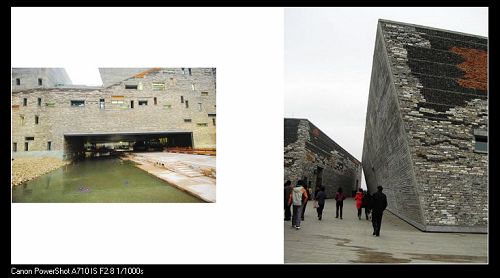
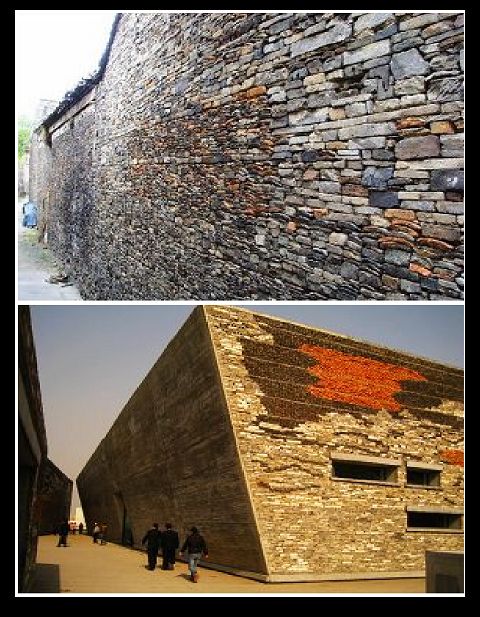
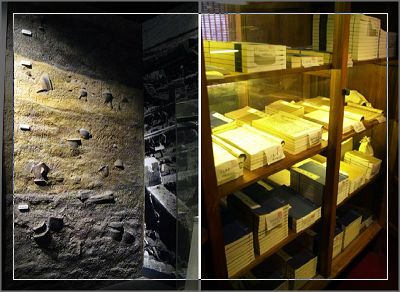
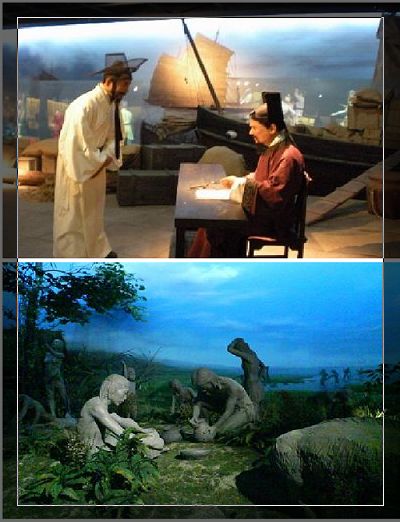
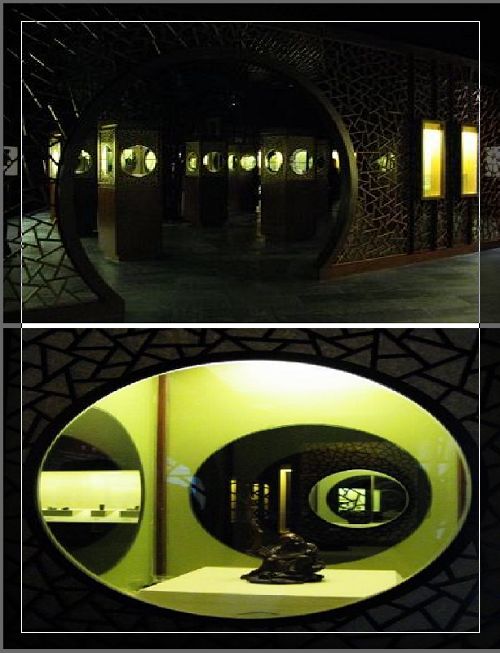
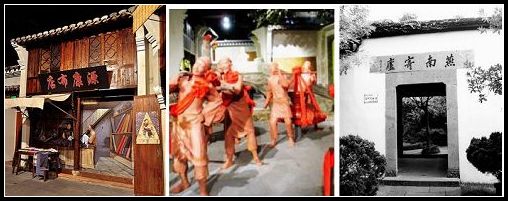

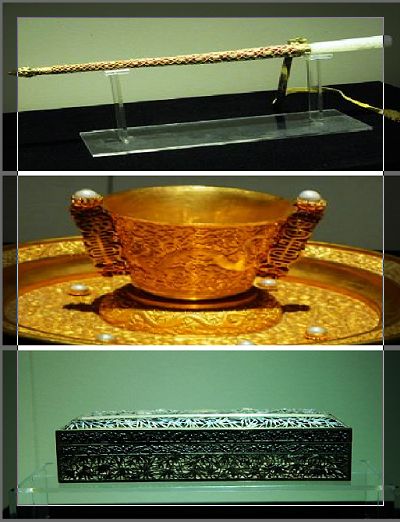

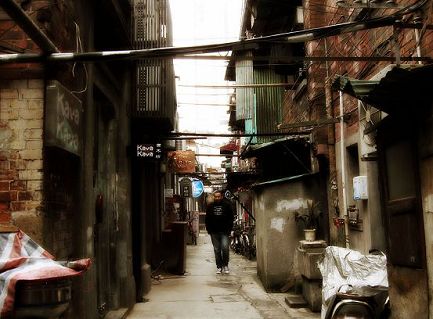

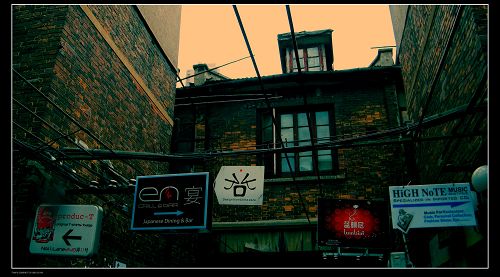
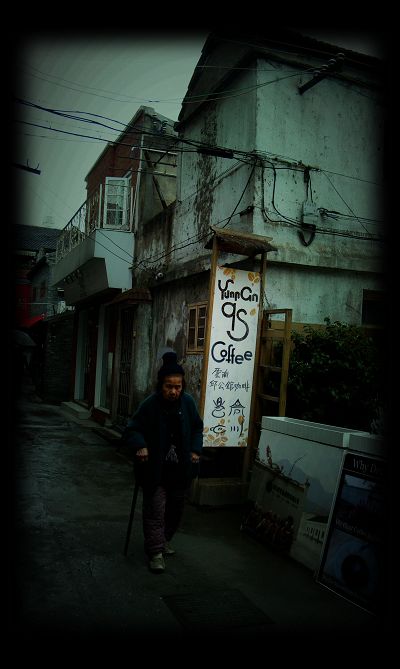

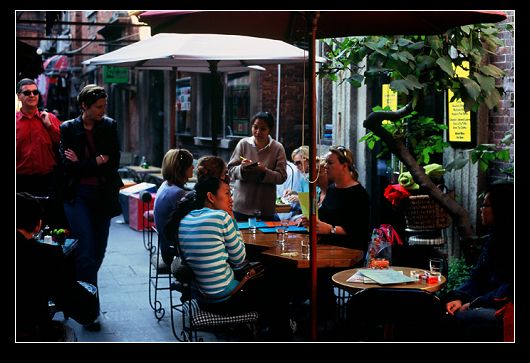

Recent Comments